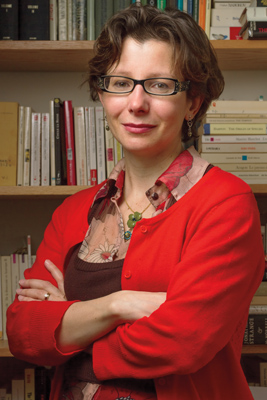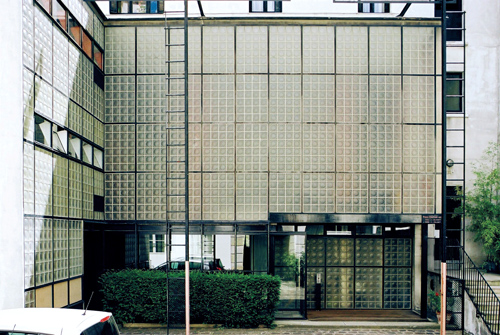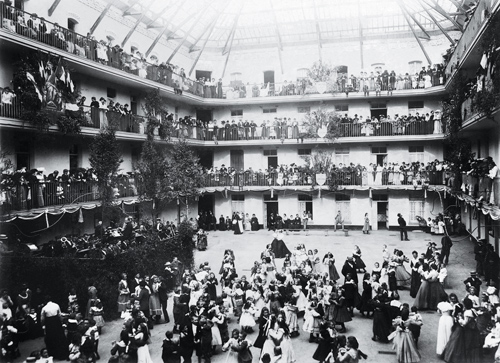Turns out, TMI predates Facebook
Katherine Duke ’05
[Research] Associate Professor of French Laure Katsaros is going back to grad school—to study how a historical rejection of privacy might have influenced architectural trends.

Katsaros—who teaches 19th- and 20th-century French literature, culture and art—has developed a scholarly interest in “self-surveillance”: “the idea of opening up your life for everyone to see.”
Today, this might take the form of a Facebook post. But French Surrealist artists of the 1920s and 1930s also embraced opportunities to expose intimate thoughts and experiences. Around that same time, it became fashionable for architects to incorporate large amounts of glass into their buildings. “And obviously, glass, being transparent, speaks to that new theme of transparency, openness, not keeping any secrets,” Katsaros says.
She’ll spend the coming academic year earning a master’s from Harvard in the history and philosophy of design (with a $262,500 New Directions Fellowship from the Andrew W. Mellon Foundation). After two semesters of coursework, she plans to spend time next summer touring Paris’ famed Maison de Verre (“House of Glass”), designed in the 1920s and used as an artistic and literary salon by the Surrealists. Also on her itinerary are buildings in the south of France designed by 20th-century architect Le Corbusier—particularly a communal structure in Marseilles.

Paris’ Maison de Verre (“House of Glass”) was an artistic and literary salon for the Surrealists.
Mark Lyon photo.
Katsaros traces the theme of self-surveillance to radical utopian socialist philosopher Charles Fourier in early-19th-century France. “He absolutely rejected the idea of privacy, of hiding” and outlined a theoretical “architecture that would allow for communal living and the sharing of everything—not just property but also [sexual] partners and children.”
Among the short-lived utopian communities later founded by Fourier’s disciples was Le Familistère de Guise, north of Paris. Katsaros (who is originally from a suburb of Paris) would like to visit and study Le Familistère as well.

The French utopian community Le Familistère de Guise rejected the very idea of privacy.
Courstesy Collection of Le Familistère De Guise.
Katsaros photo by Rob Mattson.